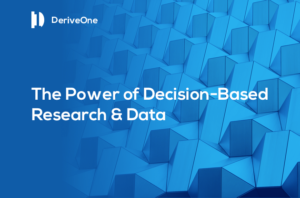
According to HubSpot, ninety three percent of adults on the Internet are on Facebook, yet only 1% of a brand’s Facebook fans will ever make their way to the company’s main website. Many blame their low conversion rates on Facebook: “Facebook ads don’t work.” “I have a ton of likes but it doesn’t mean anything because I’m not making money.” “I keep posting things but I’m not getting many views.” Few, however, look to their own efforts for answers. And even fewer put a strategy in place to convert this highly active audience into highly engaged website visitors.
Upon learning these statistics, we did a little—actually, a lot—of digging to find out who/what is actually to blame for these disproportionately low conversion rates. We know, after all, that Facebook users are a highly active and engaged audience. So, why aren’t brands able to capitalize on that? It simply can’t be Facebook’s fault…
Below are the 10 most common reasons brands aren’t getting enough love from Facebook users, along with recommendations for better using the tools at their disposal. (In order to determine which methods work best, try them out and then test each one using the same online testing methods you use to measure your brand website’s effectiveness.)
1. Failure to Get Past the First Step
Most fans won’t ever come back to a brand’s page unless they feel they have good reason to. This is not totally different from how they interact with their friends’ pages when you think about it. Unless the new friend has great content to go back to, there’s not much of a reason to go directly to their page very often, if at all.
What does this mean for marketers? It means they’ve got to use that first “viewing” wisely, offering immediate and easy ways to engage visitors further upfront:
- Email list
- Blog subscription
- Gift download
Test: The various methods listed above to determine which ones actually have a positive impact on conversion rates.
2. Poor Text and Visuals
A successful Facebook page must have concise, engaging text that’s relevant to both the brand and the fans’ interests. Overly long, humdrum copy will fail to capture fans’ attention. Crisp, eye-catching, hi-resolution visuals (photos, videos, illustrations) that clearly speak to those things visitors like about the brand in the first place, will draw them in for more.
Test: Copy length and content; image quality and subject matter.
3. Stagnant Page Content
If fans stop by more than once only to find the same old Facebook page, they might assume the page is outdated—or worse, abandoned. It’s important for marketers to give fans new ways to connect and advance their relationship with the brand or product being promoted. Keep to a consistent schedule with fresh content and ever-improving offers, using the results from the testing mentioned above.
Test: Update frequency.
4. Inconsistent or Sloppy Branding
If there’s no stylistic connection between a company’s Facebook page and its main website, visitors may not trust that the page is legit. Brands often spend a disproportionate amount of time, money and effort on website branding efforts, in comparison to the relative pittance reserved for complementary Facebook efforts. Keep branding consistent across all channels, so that visitors know exactly where they’re going and whom they’re dealing with.
Test: logo variations, cover photo options, and other brand elements.
5. Confused Calls-to-Action
Once fans arrive at a brand’s Facebook page, they should have a clear idea of what to do and what’s available to them. Offers and calls-to-action should be prominently displayed, and any associated instructions should be easy to follow. Be aware, however, that Facebook has guidelines concerning calls-to-actions, offers and anything else resembling blatant advertising on company pages, so it’s important to make sure you’re current on usage guidelines.
Test: Calls-to-Action and offer variations—in terms of design style, content, placement, and ease-of-use, to see which combos bring the most fans.
6. Too Many Clicks
People are impatient—especially on the Internet—and want immediate gratification. If visitors have to jump through too many hoops or fill out too many forms in order to get what they want, they’re likely to click away. Make sure the desired destination can be reached in the fewest amount of clicks possible. Also, if there are forms to fill out, keep them short and simple.
Test: length of forms, number of required fields, number of clicks necessary to get to target content.
7. Mystery Visitors
One of the most important aspects of Facebook marketing is finding out who’s using it to access the company website. Anything in a fan’s Facebook profile—age, gender, location, name, relationship status, “Likes,” and more—can be captured, depending on the level of authorization granted by that fan. With the right tools, marketers can compile user profiles using that authorized data as well as previous site behaviors, to get a better sense of the users they’re reaching on Facebook. Those profiles can then be tested to see what offers, content and/or experiences are most effective in attracting fans, “Likes”, website traffic or any other relevant conversion metric—as well as applied to other marketing efforts.
8. Preconceived Notions
As excited as marketers may get about shiny new objects—especially social media objects—they‘re often reluctant to spend money on developing new efforts for them. Dipping your toes in too slowly, however, can be ineffective. Once you’ve decided to “do” Facebook, you may as well do it right. Step out of your comfort zone and try new efforts for specific customer segments. An even crazier idea—consider developing Facebook-specific campaigns rather than repurposing ones created with a different platform in mind.
Test: Campaign effectiveness in terms of user receptivity by various demographics—age, location, interests—to gauge interest from potential untapped markets.
9. Ineffective Plugin Use
If Facebook plugins aren’t integrated into the main company site, a great deal of potential traffic—and revenue—is being lost. Plugin tools turn consumers into brand advocates, making it easy to share site information with Facebook friends. Some examples of plugins are:
- “Like” button: lets visitors share main site pages back to their Facebook profile with one click.
- “Like” box: enables visitors to “Like” the company’s Facebook page and directly view its stream from the brand site.
- Recommendations: gives personalized suggestions for pages on the main site visitors might like, based on what other people are sharing.
- Comment box: allows comments on any site content, such as a webpage, article, or photo. The visitor can share their comment on Facebook by posting it to their wall and their friends’ streams.
Test: Plugin types and the effectiveness of each for meeting your program goals.
10. Sticking to Stand-alone Metrics
Getting just one side of the story isn’t enough. Marketing programs need to be set up so that Facebook stats and user profiles are fully integrated with all other online and offline shopping channel information to create rich, detailed, and fully comprehensive user profiles. Profile reports should be updated on a regular basis, so the most recent user information is always available.
With the proper attention to detail and willingness to dedicate the same energy to Facebook efforts as they do to other initiatives, online marketers will no doubt find that their 1% conversion rate is something they can control. And that it’s not Facebook’s fault their customers aren’t more engaged.







